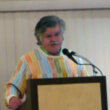Crossroads of freedom: Antietam
Description
More Details
9781461813828
9780199830909
Also in this Series
Published Reviews
Library Journal Reviews
An appropriate selection for the publisher's "Pivotal Moments in American History" series, this pithy monograph by McPherson (history, Princeton; Battle Cry of Freedom) argues that the bloody clash at Antietam on September 17, 1862, in which over 6000 Union and Rebel troops perished, would ultimately determine the outcome of the Civil War. Earlier in the year, Lincoln's armies appeared near victory with such successful western campaigns as Shiloh and Forts Henry and Donelson and the surrender of New Orleans and Memphis. However, during the summer months, the pendulum of battle swung toward the Confederacy, culminating in the Army of the Potomac's drubbing in the Seven Days Battles and the enemy's drive into Maryland. McPherson brings alive Gen. George McClellan's overtaking of "Bobby" Lee near the village of Sharpsburg, thereby checking his invasion of the North. The Federal victory at Antietam, limited as McPherson concedes it was, blunted Lee's momentum, eclipsed the likelihood that foreign countries would recognize the Confederacy, reversed a disastrous plunge in the morale of Northern troops and civilians, and afforded Lincoln the chance to issue his long-awaited proclamation of emancipation. A fine study; recommended for the classroom and all libraries. John Carver Edwards, Univ. of Georgia Libs., Cleveland Copyright 2002 Cahners Business Information.

































